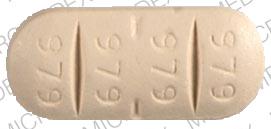Mylocel Disease Interactions
There are 5 disease interactions with Mylocel (hydroxyurea).
Hydroxyurea (applies to Mylocel) myelosuppression
Major Potential Hazard, Moderate plausibility. Applicable conditions: Bleeding, Bone Marrow Depression/Low Blood Counts, Fever
The use of hydroxyurea is contraindicated in patients with marked myelosuppression. Hydroxyurea induces myelosuppression, primarily leukopenia. Thrombocytopenia and anemia occur less frequently. Patients should be instructed to immediately report any signs or symptoms suggesting bone marrow suppression such as fever, sore throat, local infection, or bleeding. Close clinical monitoring of hematopoietic function is recommended. Hydroxyurea should not be administered if the white blood cell count falls below 2500/mm3 and/or the platelet count falls below 100,000/mm3, or in the presence of severe anemia.
Hydroxyurea (applies to Mylocel) renal dysfunction
Major Potential Hazard, High plausibility.
Hydroxyurea is primarily eliminated by the kidney. Approximately 80% of urea is excreted in the urine as unchanged drug or urea. Patients with marked renal impairment (CrCl < 60 mL/min or ESRD) may be at increased risk of toxicity associated with administration of hydroxyurea. Therapy with hydroxyurea should be administered cautiously to patients with compromised renal function.
Hydroxyurea (applies to Mylocel) hepatic dysfunction
Moderate Potential Hazard, Moderate plausibility. Applicable conditions: Liver Disease
There are no data supporting specific guidance for hydroxyurea dosage adjustment in patients with hepatic impairment. Caution and close monitoring is advised in these patients.
Hydroxyurea (applies to Mylocel) seizure disorders
Moderate Potential Hazard, Low plausibility. Applicable conditions: Seizures
Seizures have been noted very rarely during hydroxyurea therapy. Therapy with hydroxyurea should be administered cautiously in patients with seizure disorders.
Hydroxyurea (applies to Mylocel) neurologic disorders
Minor Potential Hazard, Low plausibility. Applicable conditions: Psychosis
Neurological symptoms such as disorientation or hallucinations have been reported very rarely during hydroxyurea therapy. Therapy with hydroxyurea should be administered cautiously to patients with or predisposed to neurological disorders.
Switch to professional interaction data
Mylocel drug interactions
There are 290 drug interactions with Mylocel (hydroxyurea).
More about Mylocel (hydroxyurea)
- Mylocel consumer information
- Check interactions
- Compare alternatives
- Drug images
- Side effects
- Dosage information
- During pregnancy
- Drug class: antimetabolites
- Breastfeeding
Related treatment guides
Drug Interaction Classification
| Highly clinically significant. Avoid combinations; the risk of the interaction outweighs the benefit. | |
| Moderately clinically significant. Usually avoid combinations; use it only under special circumstances. | |
| Minimally clinically significant. Minimize risk; assess risk and consider an alternative drug, take steps to circumvent the interaction risk and/or institute a monitoring plan. | |
| No interaction information available. |
See also:
Further information
Always consult your healthcare provider to ensure the information displayed on this page applies to your personal circumstances.


